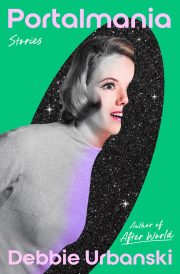Graphic Novel Production Schedules Are Too Short—and the Publishing Industry Should Care About It
by Nilah Magruder
Note: This article first appeared in The Bulletin #216 in October 2021.
I am a cartoonist. I draw. I write. I draw and write simultaneously. Much of my work these days is in graphic novels. It has fed me and kept a roof over my head for the past few years, but as I near forty years old, and my career as an author is only beginning, I find myself starting to age out of the work as a visual artist. It surprises people when I say that art-making is a physical activity. Drawing requires long periods of repetitive movement cycling from the shoulder down through the arm and wrist. Standing or bending over a canvas impacts the legs, back, and neck. My body was up to it at the start of my career, but after ten years, the strain is taking its toll.
The problem is the schedules. They’re too fast, too short, and place too much wear and tear on an artist’s body and mind. The solution seems simple to me: ask for a longer schedule. This notion, however, often receives pushback from editors, publishers, and even agents. Graphic novels are a growing market in many sectors of publishing, but many of those publishers are used to prose and picture books, which are much faster to produce. By comparison, I imagine asking for more time on graphic novels seems unreasonable.
So, let’s compare. When I entered the children’s book industry, six months was the average timeline for illustrating a thirty-two page picture book. Let’s say I were to expand that thirty-two pages to two hundred pages. The schedule to produce that gigantic book would be a little over three years.
Why is it, then, that graphic novel illustrators are given less time to work? The average graphic novel is two hundred pages, but it’s common for publishers to offer a year, sometimes even less. Do people think it takes less time to draw a graphic novel page than it does a picture book page? Why would a graphic novel page—which contains multiple illustrations in the form of panels—take less time than a single picture book page? I wonder where the myth that it is easy and fast to draw comics came from. Perhaps it is because comics are so easy and fast to read. By design, a comic has more pictures than words, so it’s less reading and more looking. But I would argue if that’s what you think, then you are reading comics too quickly. Images are meant to be read just as much as text, and comics are meant to be read slowly. One may visit a museum for just a day, stopping longer in some rooms but breezing past most, bypassing entire wings in order to get to the gift shop before it closes. Or one may revisit the same museum again and again, drinking in every brush stroke, basking for long periods in front of those favorites you know well that still stir up a sense of awe in you, wandering down previously overlooked passages that reveal even more treasures than you knew one building could hold. Neither method is wrong, but I would say one brings more enjoyment than the other.
Perhaps the myth is due to a graphic novel’s size. These days, the dimensions of the average middle- grade graphic novel are around 5 ½″ by 8″. The standard picture book is 8″ by 10″ or larger. Graphic novels are not drawn at the size they are produced. The art is done large and then shrunk down in production. Regardless, drawing small does not always mean less time and effort.
Perhaps it is because larger comic publishers, like Marvel and DC, can produce comics so quickly. Take my miniseries, Marvel Rising, later compiled into a trade paperback of about one hundred pages. That one hundred pages was published in six months. By that metric, it is no stretch to produce two hundred pages in a year, but Marvel, DC, and many other comic publishers hire teams of artists and use a pipeline model to get the work done. It took a team of five artists to draw, letter, and color one hundred pages of Marvel Rising in six months.
Graphic novels are routinely drawn by a single artist. It’s becoming more common for publishers or the artists themselves to hire help, but the expectation is still that one primary artist is doing the bulk of the work.
But surely drawing a two-hundred-page graphic novel is easier than writing a four-hundred-page novel. Let’s consider that the average page of prose is roughly 250 words. One might take any length of time to write that amount . . . but let’s say a writer spends about an hour on that page. To thumbnail, pencil, ink, letter, and color a single graphic novel page could be done ambitiously in eight hours, but may very well take longer.
(I considered including some visual aids here to illustrate the point, but SFWA only pays by the word, so while this text is considered of value, to include illustrations would be unpaid labor.)
And if we were to not look at the word length, but the content of the words—what scene is being described? Is it a room full of people? Are there spaceships? Are there horses and bicycles (arguably worse than spaceships)? Perhaps it is part of a conversation or an explosive argument. Perhaps it is one character’s abstract, interior thoughts.
Now, how would you draw those things? How many pen strokes would it require? How many elements must be broken into multiple panels just so the reader can understand what’s happening? That 250 words can easily become multiple pages.
What about changes and alterations to illustrations already drawn? Edits are a given for written text— the editor for this article may ask me to make some cuts and revisions, but what if this was a comic? Making cuts or changes at this stage would require redrawing the whole thing.
So, what is the right schedule length for a graphic novel? That depends largely on the artist. We all work differently. Every graphic novel has its own visual language to consider. A volume of Dog Man does not involve the same process as a volume of Saga. But I would say that two and a half years for a 200-page graphic novel is a starting point. Certainly, artists have done more in less time, but usually at the expense of their health. Injury and chronic pain are common within creative professions. Drawing for long periods is hard on the back, shoulders, and wrists. There are ergonomic solutions available for some workspaces, but this does not change the long hours or the physical demands of art-making that result in repetitive strain injury (RSI), carpal tunnel, and other ailments. In this age of screens and digital art, loss of vision is also increasingly common. And for freelance illustrators, there’s no company-provided health insurance. The cost of insurance, medications, treatments, aids, and other healthcare adds up, even as an artist’s ability to do the volume of work needed to make a living is impacted.
Consider as well that these short schedules are inherently ableist, ageist, and classist. They do not take into consideration that graphic novel work is work. Schedules are not designed to allow for weekends, vacations, caring for family, illness, or emergencies. Short schedules that demand artists set a rigorous pace guarantee that the artists most suited to the work are able-bodied and financially secure. It sets up yet another roadblock that keeps marginalized creators out of publishing.
I believe we can achieve a healthy and sustainable future for the graphic novel market with open communication. Publishing professionals in the business of buying, selling, editing, and promoting graphic novels must get familiar with comic terminology and production practices. Publishers, be ready to hire art assistants (flatters, colorists, letters, layout artists, inkers—they should be included in the book’s budget and schedule) and discuss book specs at the start of the contract. Read Scott McCloud’s Understanding Comics and Experiencing Comics, edited by Rachelle Cruz. Talk to editors and other professionals with a history of working in graphic novels. Your literacy with the comic medium should match your literacy with prose and picture books.
Agents would also do well to read up on comics. Protecting artists from exploitative practices is an agent’s responsibility, and understanding the labor that goes into making comics is crucial. Agents should talk to their artist clients early and often about their workflow and needs. There’s no one-size-fits-all production schedule for graphic novels. What’s most important is that the schedule matches the artist’s pace.
As more and more writers are entering the graphic novel space, it is important to remember that artists do not work for writers. They are collaborators in the space of a graphic novel, and words do not dominate here. The lion’s share of the work belongs to the artist (graphic novels are a visual medium, after all). Remember, writers, that your words are important, but they’re only a part of the full picture. Art is also a storytelling tool. You can lift some of the burden from artists by advocating that they receive more time and better pay for their essential contributions.
And artists, do not be afraid to advocate for your own best interests. You are the experts on what is a reasonable production schedule for your style and workflow. Remember that graphic novels only exist because of the artists willing to draw them.
A healthy future for the graphic novel market depends on open communication between graphic novelists and publishing professionals. Talk to each other and be open to learning, but above all, respect the labor of art. Graphic novels are a beautiful medium when artists are given the time and support to do their best work.
 Nilah Magruder is an artist based in Western Maryland. She is the author of M.F.K., a middle-grade graphic novel and winner of the Dwayne McDuffie Award for Diversity, and How To Find a Fox, a picture book. She has published short stories in Fireside Magazine and the All Out: The No-Longer-Secret Stories of Queer Teens throughout the Ages anthology. Nilah has also written for Marvel Comics, illustrated children’s books for Disney- Hyperion, Scholastic, and Penguin, and worked as a writer and storyboard artist in television animation. She is currently writing and illustrating three graphic novels. When she is not working, Nilah is watching movies, baking, and snuggling with her cat, dog, and turtle.
Nilah Magruder is an artist based in Western Maryland. She is the author of M.F.K., a middle-grade graphic novel and winner of the Dwayne McDuffie Award for Diversity, and How To Find a Fox, a picture book. She has published short stories in Fireside Magazine and the All Out: The No-Longer-Secret Stories of Queer Teens throughout the Ages anthology. Nilah has also written for Marvel Comics, illustrated children’s books for Disney- Hyperion, Scholastic, and Penguin, and worked as a writer and storyboard artist in television animation. She is currently writing and illustrating three graphic novels. When she is not working, Nilah is watching movies, baking, and snuggling with her cat, dog, and turtle.


